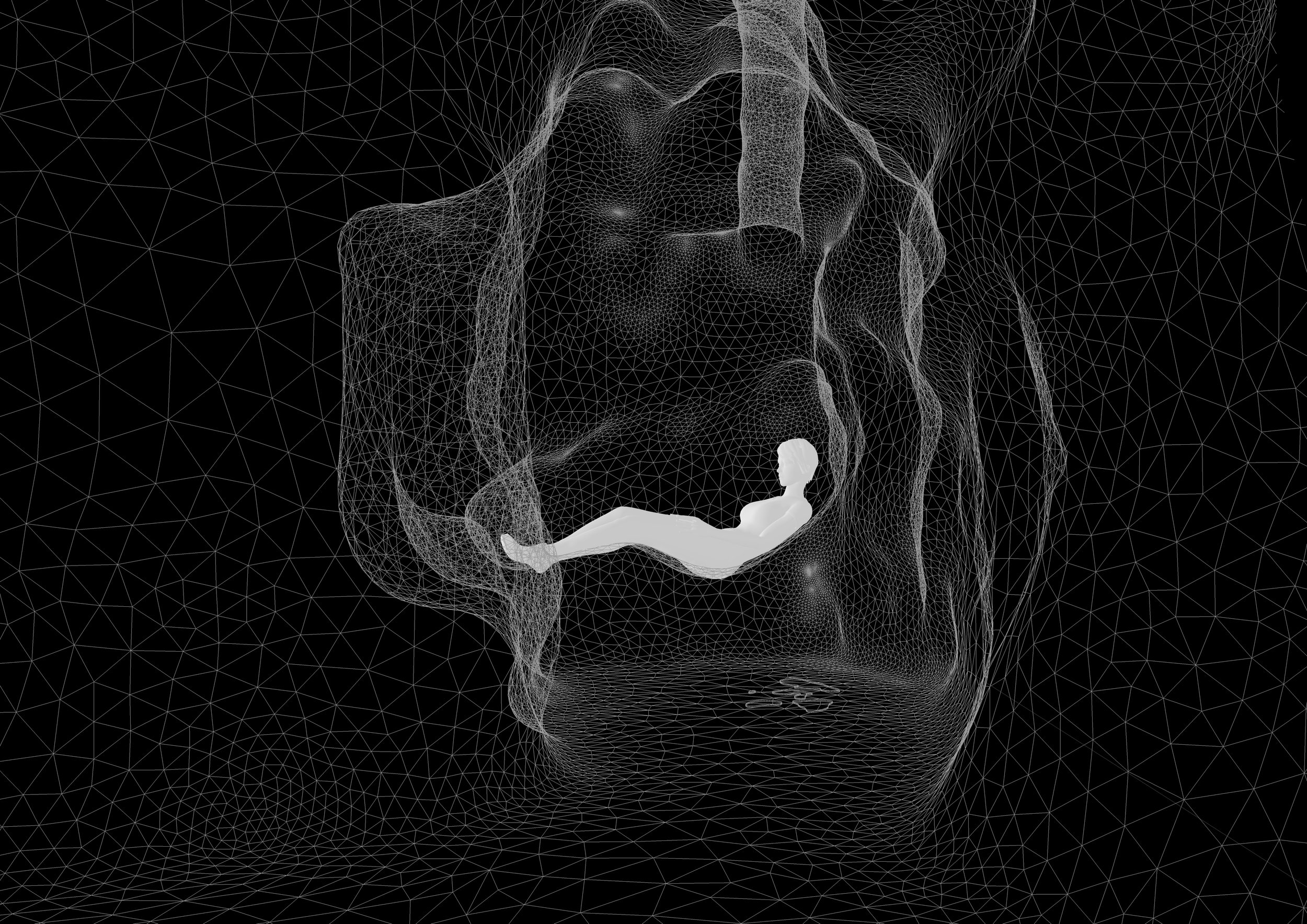the human burrow
Year: 2021
Dimensions: 30m x 3m x 2m
Materials: Seismic Communications, Cork, Ship Containers (re-used), Bespoke 360° Vibrational Sound System (24 channels).
Location: The Human Burrow is permanently opened to the public at Kielder Waterside, UK. 55° 10' 55.9308" -2° 31' 40.4796"
Curation: Peter Sharpe (Kielder Art and Architecture)
Science Collaborators: Jan Randall, Caitlin O'Connell, Damian Elias, Nicolas Mathevon, Jérôme Sueur, Martha Manser, Matt Mason, Rex Cocroft, Chris G. Faulkes, James Hare.
Technology and Engineering: Artist & Engineers
Art Construction: Raskl.
Architecture Consultant: Caracalla Architectes
Energy: Pure Energy Renewables Ltd and Webb CDM
Structure/Landscaping: D. G. Walton, J C Consulting
Made possible by the financial support of: The European Agricultural Fund for Rural Development, Arts Council England, Kielder Water & Forest Park Development Trust.
“The Human Burrow, is a sculpture that offers a totally new way for visitors experience Kielder’s unique landscape {…} the way that its structure removes visitors from their everyday experience to sensitise them to a specific experience shares a conceptual link with Chris Drury’s Wave Chamber, Kielder Observatory, and James Turrell’s Kielder Skyspace in particular.”
Peter Sharpe, Curator of Kielder Art & Architecture
The human burrow is a subterranean listening station exploring the sounds of underground wildlife.
As they enter the tunnel, visitors are invited to give theur eyes enough time to accommodate to the obscurity, then find their way to the main chamber, where then can either sit or lie down.
Once inside the burrow, listeners are immersed in a composition made of sounds and vibrations of animal origin. You may spend the night with a fox dreaming in his den, experience the noise of thousands of ants crawling about their nest, feel the seismic songs of elephants conversing through the ground, listen to kangaroo rats foot-drumming from burrow to burrow, or even enter a crocodile’s lair, where an egg is about to hatch.
The human burrow is a human-scale acoustic refuge accessible day and night to humans and non-humans alike.
Seismic communication refers to the diverse ways in which certain animals use vibrations as a mean of communication. Through materials as diverse as soil, bark, leaves, webs, shells, water, living beings have shaped inventive ways of shaping vibrations and conversations. Using uncommon microphones and strategies (e.g. geophones, laser microphones, piezoelecricity) bio-acousticians have long studied these sounds hidden from the human ear, as they don’t travel through the air.
The Human Burrow is an underground listening station, an acoustic refuge, a public archive of natural vibrations. Based on sound extracts of underground signals and seismic vibration provided by scientific collaborators, a series of twelve 1 hour compositions were developed and arranged spatially in the subterranean space. The bespoke sound system that was developed for the experience, transmits the seismic vibrations through the material of the burrow and through the bodies of visitors. As they sit or recline, visitors become one with the soil like acoustic material (cork), their bodies like maps through which vibrations travel.
The Human Burrow Kielder is part of the Kielder Art & Architecture collection of award-winning art and architecture. Located at the main lakeside visitor centre, Kielder Waterside. The Burrow has been designed to be as accessible as possible, and in line with its ecological source material, uses recycled cork as its main internal material and solar energy as its power source."








